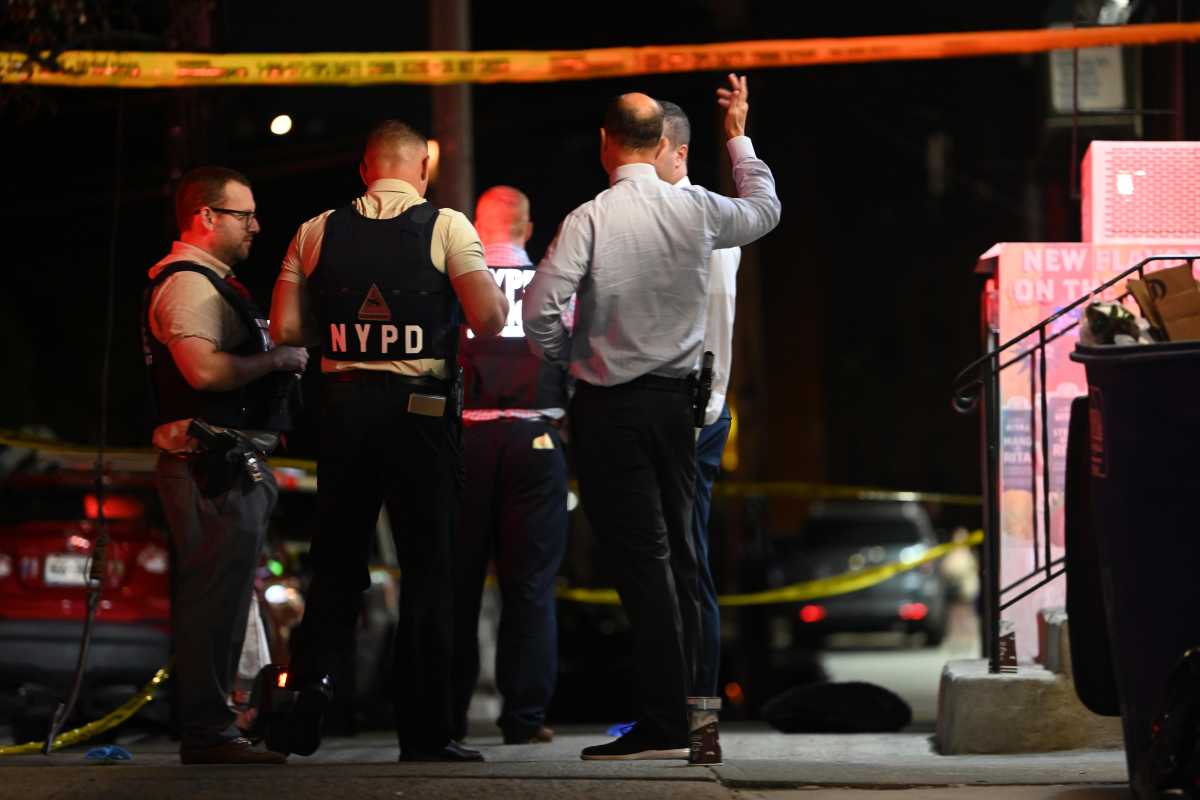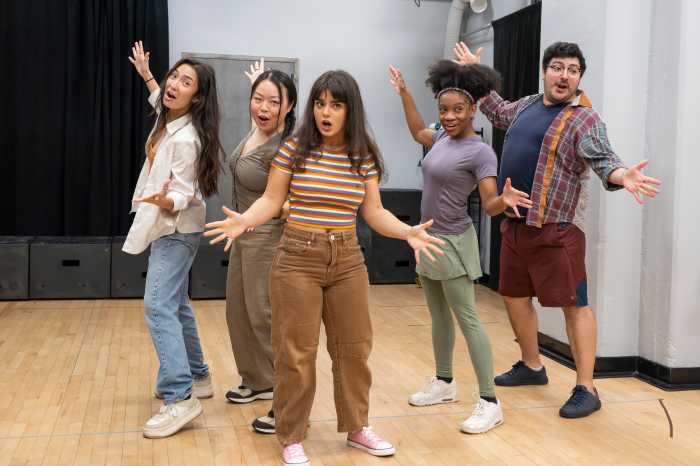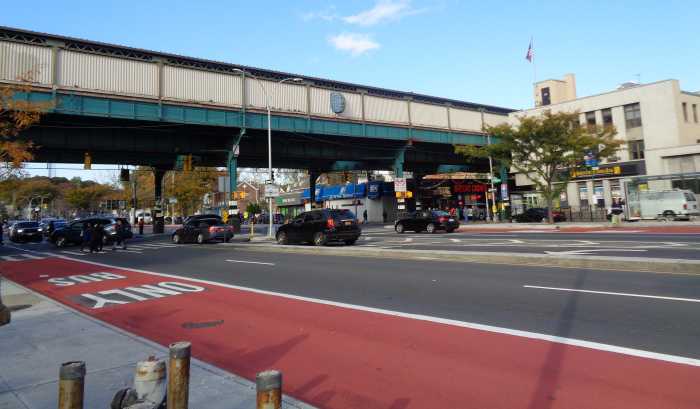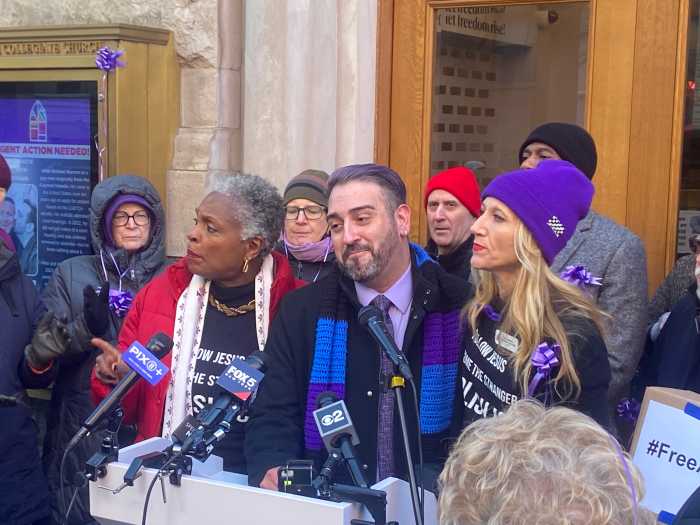-
 As Sheroff and Mattarita work on the Greek murals, Kitty Prager, a neighbor who lives next to the Amtrak underpass, comes out to give them bottled water. A few weeks ago, a gentleman from the adjacent Federation of Hellenic Societies of Greater New York brought Greek food.
As Sheroff and Mattarita work on the Greek murals, Kitty Prager, a neighbor who lives next to the Amtrak underpass, comes out to give them bottled water. A few weeks ago, a gentleman from the adjacent Federation of Hellenic Societies of Greater New York brought Greek food.
Leaders of the Greek-American nonprofit had frequently complained to the City Council about graffiti on the underpass.
501(See)(Streets) tends to focus on areas that are known for having high crime rates and graffiti complaints. Before the Greek murals were painted, the Amtrak underpass was frequently tagged with graffiti — “a total mess,” Sheroff says. Councilman Costa Constantinides, who represents the City Council’s 22nd District, co-sponsored the project.
“We’ve continuously worked on (graffiti) removal, yet we’ve been unable to stop it. So we are working with 501(See)(Streets) to do these murals and improve the landscape of Astoria,” Constantinides says.
Prager, who has volunteered for many years to blot out walls tagged with graffiti in Astoria, says she thinks the murals help deter graffiti.
Now, what was once a go-to wall for taggers has, as Sheroff puts it, become a “little Athens.”
Street murals that don’t get tagged tend to remain in neighborhoods for years, says Vince Ballentine, an artist who worked with 501(See)(Streets) on a mural for Il Triangolo, an Italian restaurant in Corona.
He says the street murals are “for the people.”
“It goes from being a bunch of spray paint and an idea to something that’s going to live with someone for the rest of their lives,” Ballentine says.
” data-id=”111927545″ data-link=”https://www.amny.com/wp-content/uploads/2019/10/8758_image.jpg” class=”wp-image-1.11927545″/>
Photo Credit: Wendy Lu
At an Amtrak underpass tucked away in Astoria, Queens, a man and a woman stand opposite one another with paint rollers and spray cans in their hands.
They’re putting the finishing touches on two giant murals — each one slightly bigger than a subway car — showing ancient Greek motifs, the national flag and philosophers like Socrates.
In Astoria, with its large Greek community, the two murals allow residents to celebrate their heritage, says Marthalicia Mattarita, the murals’ artist and a Harlem native.
“The other day, this woman came to me and said, ‘Wow, I get to walk by and be reminded of how proud I am to be Greek,”” says Mattarita, who has painted more than 30 murals in New York City.
The murals are just one of 15 projects that Noah Sheroff, a 29-year-old Queens native, has spearheaded in the last two years.
Sheroff is the founder of 501(See)(Streets), a nonprofit organization that recruits professional artists to paint outdoor murals for NYC community groups looking to beautify their neighborhoods. Community groups range from businesses to police precincts to civic associations.
“We’re like the intermediary between the artist and the community groups,” says Sheroff, who works with a network of 25 artists.
For artists who don’t have studios or a lot of money, street murals provide an avenue for showcasing their talent, says Lisa Bateman, an adjunct associate professor of fine arts at Pratt Institute.
“I think street art started as a response to the economy,” says Bateman, who specializes in installation art.
Outside, there’s no need to impress curators or art dealers, a typical hurdle. The public is the only audience.
501(See)(Streets) completed its first mural project in the summer of 2014, but it wasn’t until January 2015 that it officially became a 501(c)3 nonprofit. So far, the nonprofit has completed 15 murals in New York City, mostly in the Bronx, Brooklyn and Queens.




































